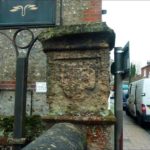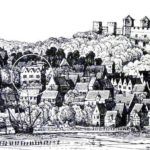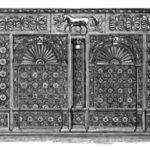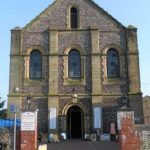- Home
arrow_drop_down
- What’s On
arrow_drop_down
- Where To Stay
arrow_drop_down
- Things To Do
arrow_drop_down
- Eat & Drink
arrow_drop_down
- Shopping
arrow_drop_down
- Plan Your Visit
arrow_drop_down
- Local Businesses
arrow_drop_down
- Business Support
arrow_drop_down
- Local Directory
arrow_drop_down
- Estate & Lettings Agents & Architects
- Health, Beauty & Wellbeing
- Home & Gardening Services
- Photographers, Fashion & Lifestyle
- Retirement, Care & Funeral Services
- Travel, Holidays & Languages
- Tradesman, Builders and Property Services
- Vehicle Repairs, Storage, Hire & Taxi Services
- Weddings, Events & Entertainment
- Business Support
Arundel and the Assyrian link
Originally published July 2014
Nineveh (Pronounced Nin-e-ver). One of the oldest and greatest cities in antiquity, part of the Assyrian empire on the banks of the Tigris River in the area we now call Iraq.
But what has all this to do with Arundel?
A high status ‘mansion’ known as Nineveh House once stood on a site in Tarrant Street before it was demolished c1833 to build the Congregational chapel on the site. It is not known who built the house although various dates and theories have been put forward over the years.
Tim Hudson in his history of Arundel suggests it was built in the 16th or early 17th century and that although it contained ‘allusions to the heraldry of the earls of Arundel’, it was likely to be the town house of some other important family.
Local tradition claims that the house was built c1426 by John Fitzalan, the 13th Earl of Arundel. Believing that he may lose Arundel castle due to an inheritance challenge by his relative Thomas Mobray, a cousin of Henry V, John had this magnificent house built. However, the dispute was not settled within their lifetimes and the castle remained in John’s ownership.
Whatever the truth, there is a detailed description of the house in the Sussex Archaeological Collection (Vol XX. 1868) written by the Rev. Edward Turner who visited the house many years earlier and I have based much of the following on his account.
Turner refers to Nineveh as, “An old, and, in some respects, a most extraordinary house which stood within my recollection”, and clearly a prestigious and high status building. The grounds of the house extended all the way to the river with its principle entrance, a brick-built arch in semi-Gothic style, near there while the side entrance was via a passage. He notes that the building can be seen on the engraving of 1644 the town by Wenceslaus Hollar.
The house was sturdily built out of chalk, faced with flint with the mullions around the lower windows also made of chalk and a dressing made of stone.
The main entrance lead into a large hall which included a grand staircase made from solid blocks of oak with carved balusters on either side. Also carved into the staircase were scrolls, flowers and oak sprigs. Attempts were made to find a buyer for this fine staircase before demolition without success.
On the second floor was a large (40×25 ft) sitting room with a high-pitched ceiling, with walls of dark framed and moulded oak panelling. At the western end of this room was a large fireplace of polished Sussex marble. Above this was what Turner felt was the most striking feature of the whole house, an elaborately carved mantel piece (10x10ft) of a beauty of workmanship and richness of design that surpassed anything he had seen before. Turner was later to obtain what remained of this carved mantel and had it made up into a cabinet. (I wonder where this is now.)
Beneath the sitting room and of a similar size was what appeared to have once been the dining room. This was entered via the hall and was lined with plain oak panelling. On the same floor were four other rooms which appeared to have been for the use of servants.
The above were memories Turner had of the house when he was much younger but towards the end of his article he laments about the ruinous condition of the once grand house shortly before it was demolished. By this time the house was in a terribly dilapidated state and had been let out as flats, stores, workshops and in one case even a drinking establishment called the Star Inn.
Turner concludes by considering who may have built this grand house. He noted that there were numerous visual links in the house of reliefs showing a horse holding an Oak branch in its mouth. This is a well known symbol of the Earl’s of Arundel. After finding carved initials in one of the reliefs he concluded that it had been built by John Fitzalan as per local tradition.
However, although the town has lost this rich part of its history, the name Nineveh lives on in the name of the old chapel, now an antique centre called Nineveh House and The Nineveh Shipyard address just off of River Road.



